Twenty-one miles off the southern coast of Belize lies three small islands called The Silk Cayes. Of the three, the northern-most caye is virtually a bump in the ocean. The Silk Caye is large enough to pull a few boats up to and wander around in four or five minutes. Certainly smaller than a football field and the southern-most caye is half that size.
They lie within swimming distance of the second largest barrier reef in the world. They were my central teaching grounds from 2000 until 2004.
The entrance to Silk Caye was a treacherous route through coral heads and shoals. And once you managed to steer your dive boat onto the beach, turning around to leave usually meant lifting your engines out of the water and having someone push the boat until it was facing the direction you had to go to steer back the same way you came in.
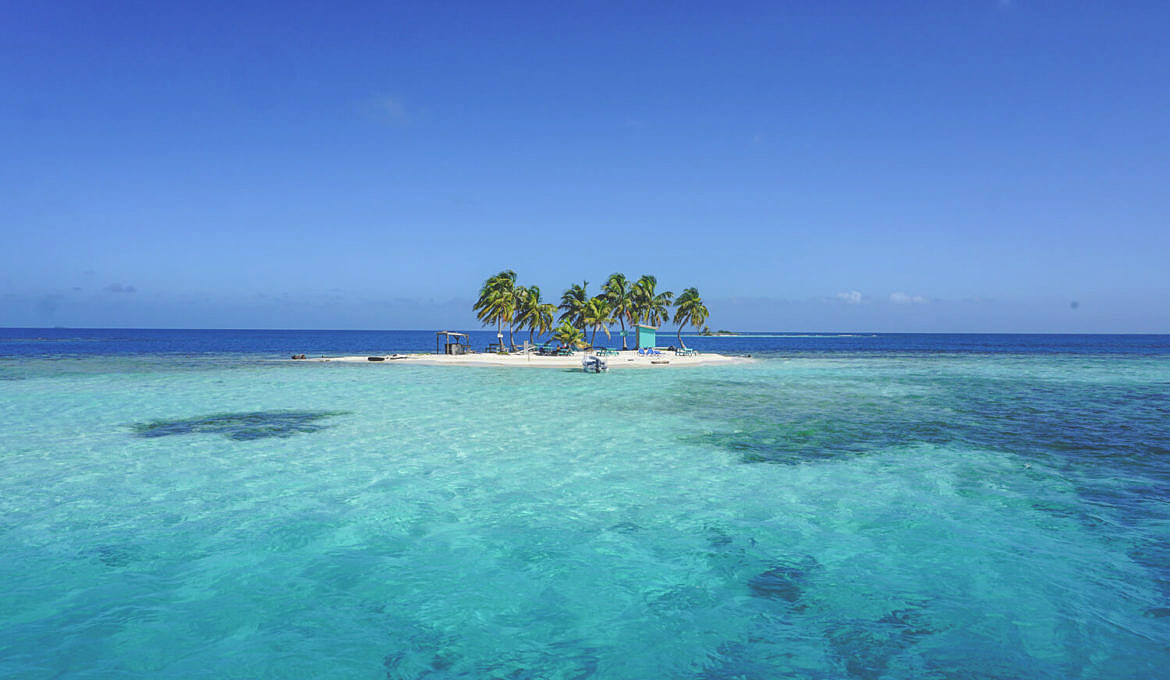
The Silk Cayes, Belize
To most visitors, this was a virtual island paradise and it was the island on which we most often had lunch after our morning dive to do our surface intervals.
In the morning, we would drop off our snorkelers on this island with the food for lunch and head off on the short ride to the edge of the wall and gear up for the days dive.
This is a fascinating spot, as you can clearly see the bottom and position the boat so you do your back entry directly over 45 feet of water, simply a few feet from a 2,000 foot drop-off. Arthur, my divemaster, and I would regularly bet how deep the water was we were in before heading over the side.
On this particular day, I was leading a new diver named Frank onto the barrier reef for his first real dive after I had certified him. He was a big man and we descended slowly to forty-five feet and headed east towards the wall.
We began the drift dive heading north, as the current was none existent. The wall was to our right as we swam along the fifty-five foot edge.
Suddenly, and for the first time, I saw a shape coming up at us from the deep. It was a large loggerhead turtle. It was mating season and he was coming to see what the noise was all about. Our bubbles had attracted him.
I spotted him coming and turned to Frank to make sure he saw what I was seeing. There was virtually no chance of him not seeing the turtle, whom I came to name Seven Barnacles for the precise reason that that was the number of growths covering his back.
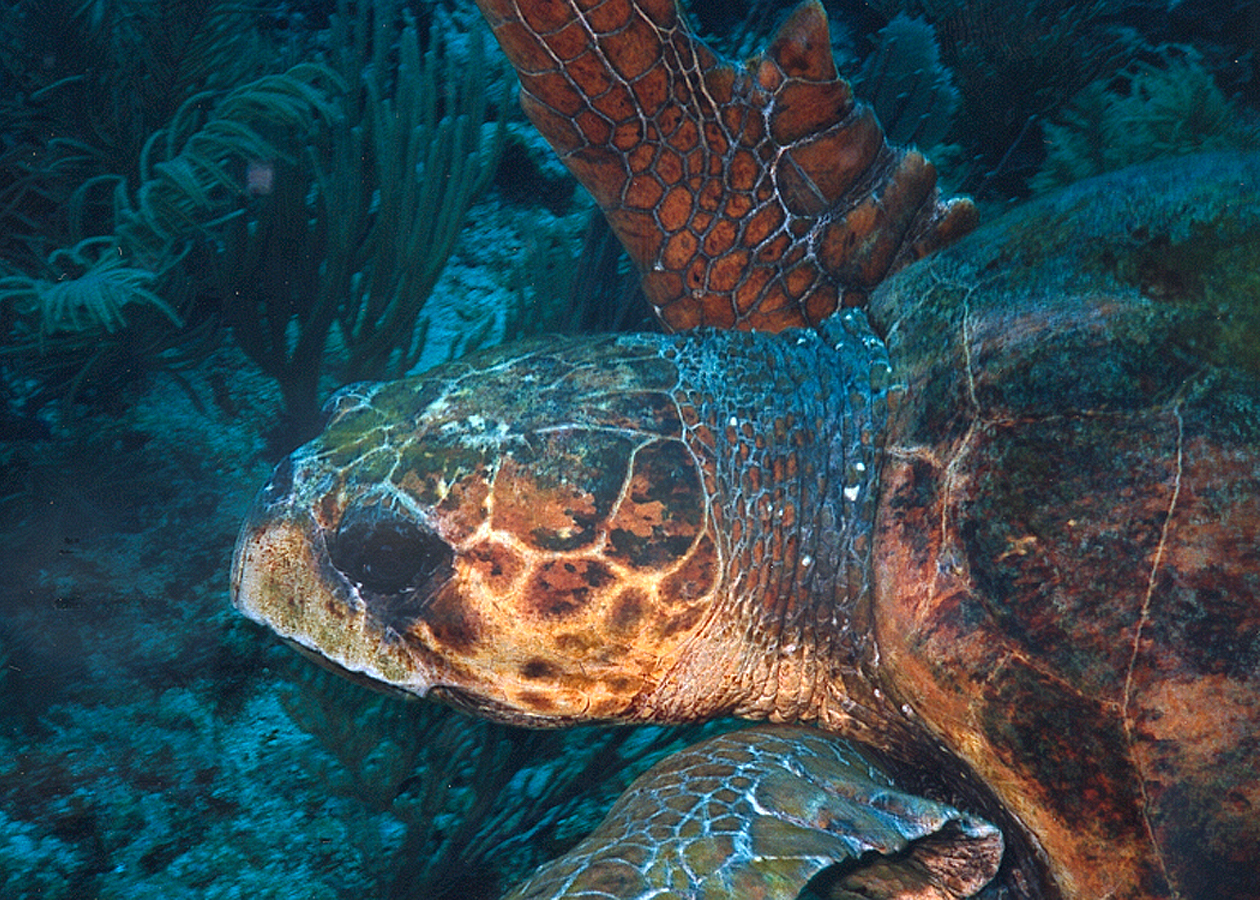
Seven Barnacles
On this day, Seven Barnacles had decided he was really going to check us out and he continued swimming directly towards us. I motioned to Frank to stay calm but as the turtle got within two feet of his face, he put his hands out and placed them directly on the loggerheads shoulders and pushed him off.
Seven Barnacles backed off and remained neutrally buoyant within five feet of us, staring at the two of us. Frank was blowing a lot of bubbles… and in a few minutes, Seven headed off, having decided we were not mating material.
It was an awesome dive and I later learned that Seven Barnacles lived in this area as I visited with him on over a dozen other occasions.
That evening, back at the bar, I teased Frank when he asked what I thought could have happened if Seven Barnacles had thought he was a turtle, to which I jokingly replied,
“Who knows… I understand that when Loggerheads mate, they couple for days at a time.”
Little did I know that a journalist was within earshot and a month later, an article ran full page in the Philadelphia Enquirer featuring the story of the Alaskan diver whose leg I had pulled.
Belize held many surprises.

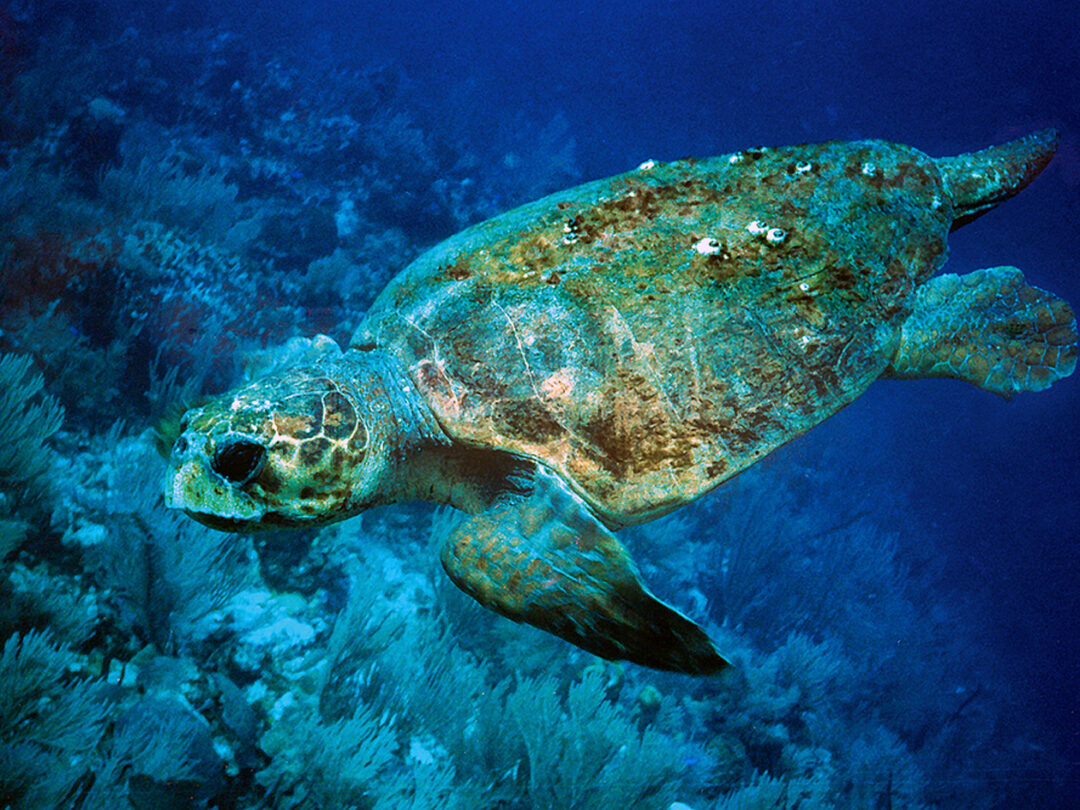
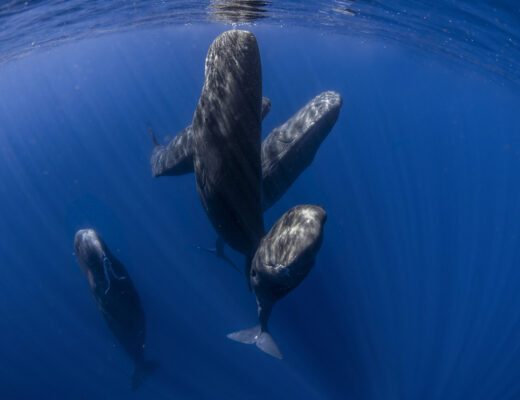
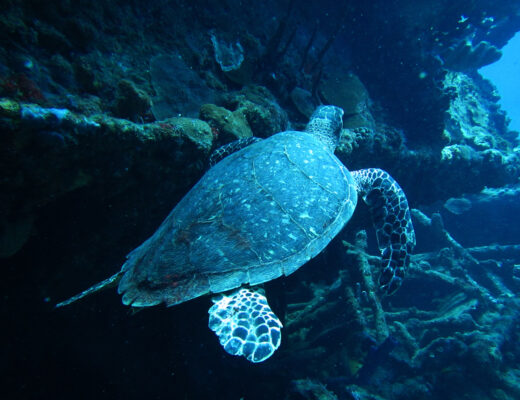
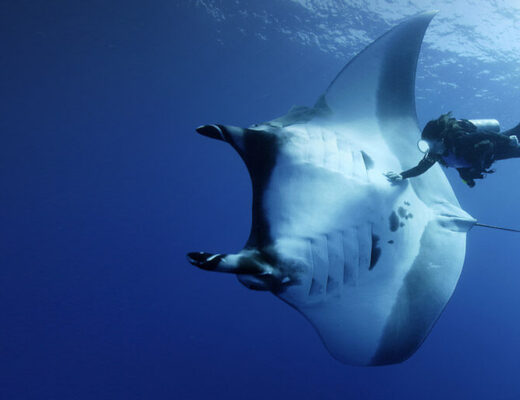
No Comments